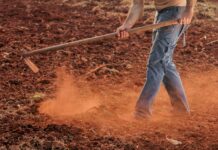After a bullish start to the 2021/22 agriculture season with prospects of another excellent season despite cost pressures, the sector faces a further challenge of increased cost of debt following the South African Reserve Bank’s (SARB’s) decision to raise its repo rate by 0.25% and subsequently the prime lending rate to 7.5%. Although likely to be cautious, expectations are for further increases of 125 basis points through to 2023.
Thus, farmers face higher debt serving costs from rising interest rates which will erode profit margins in the sector in an environment of higher input costs emanating from the massive upswing in fuel, fertilizer, pesticides, and herbicides experienced during the current season. The past record low interest rates afforded farmers an opportunity to do the necessary replacement and replenishment of the machinery and equipment which saw the total tractor and combine harvester sales for 2021 lifting sharply by 26.4% and 44.9% respectively year-on-year (y/y).
A further dampener to what was supposed to be an excellent agriculture season is that much needed seasonal rains on the back of the La Nina weather pattern flooded crops, caused damages in other areas, and delayed planting.
The latest National Crop Estimate Committee Report (CEC) shows a mixed picture on planting of summer crops. The preliminary planting estimate shows a contraction of 5% y/y to 2.61 million hectares in the area under maize, the biggest crop for the country. Although it is still early days, this might yield a crop of 15.3 million tons which is sufficient for the country given the bulging carryover stock. On the positive side, gainers were sunflower and soybeans with area planted increasing by 21% and 10% respectively y/y.
Commodity prices remain relatively strong and should somewhat help offset the cost pressures on the sector. We hope for a few weeks on sunshine to allow the crops to recover and deliver another good harvest, paving a way for a better agriculture season and help limit food inflation pressures.








